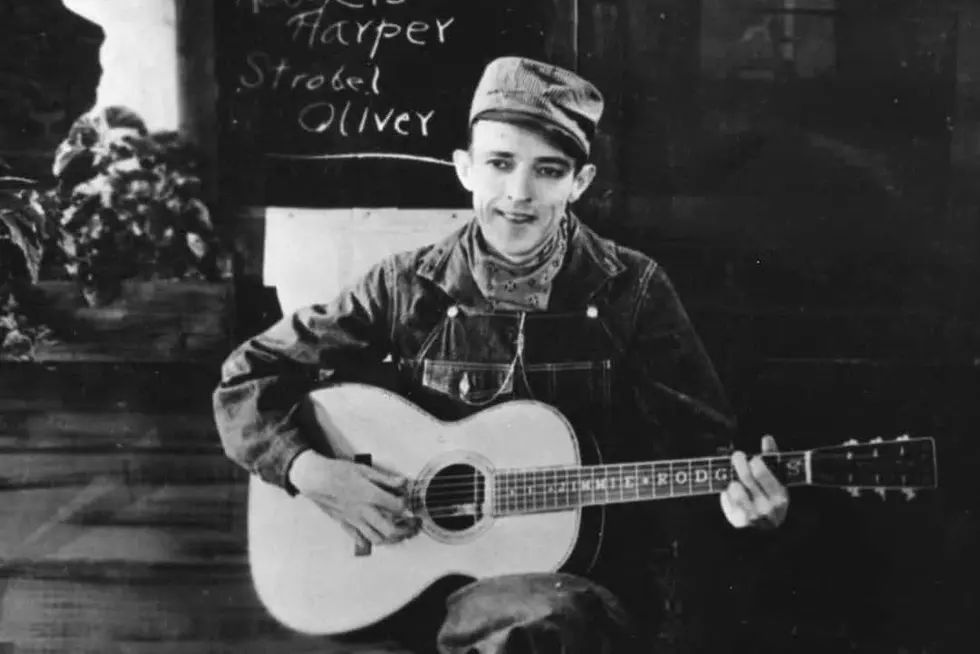
Top 5 Jimmie Rodgers Songs
Few things are certain in the history of country music, unless you’re talking about the early influence of Jimmie Rodgers. The Meridian, Miss., native’s sound, look and business plan undoubtedly set the map for solo country stardom long before its roads led to Nashville.
Rodgers was born on Sept. 8, 1897, and worked on the railroad before a positive tuberculosis test in 1924 shifted his attention to music. Radio experience and a partnership with the Jimmie Rodgers Entertainers -- a string band from the twin cities of Bristol, Tenn. and Bristol, Va. -- prepared Rodgers for an historic recording session.
In 1927, Rodgers went to his bandmates' hometown to record with legendary A&R agent Ralph Peer. Infighting broke up the band after a successful audition, so Rodgers decided to record by himself during the famed Bristol Sessions, the commercial country music "big bang" that also brought exposure to the Carter Family. Whatever caused the inner-band feud allowed Rodgers to begin his run as country’s first solo singer, songwriter and guitarist.
During the remaining years of his life, Rodgers cut more than 100 sides, including his famous series of “blue yodels.” Various tracks incorporated Southern folk music of white and African-American origin, as well as early interpretations of jazz and the blues. For many of these recordings, Rodgers poured in the real emotion, pain and fear caused by his physical condition. In the process, he invented the sad country song formula that was later perfected by Hank Williams.
On May 26, 1933, Rodgers died in his hotel room at New York City’s Taft Hotel. His passing came after six busy years as one of the first, if not the first, singer to tour extensively beyond a local radio market. Through it all, he defined the look of country music by wearing the outfits of a railroad worker, cowboy and ladies’ man.
To learn more about how a blue-collar railroad worker created country stardom by mixing regional folk sounds with emerging popular styles, check out these five genre-shaping tracks. It's a list so exclusive that it leaves off some all-time classics, including "Peach Pickin' Time in Georgia."
- 5
"Miss the Mississippi and You"
1934Rodgers sometimes wandered into the popular realm, as heard on this sentimental ballad. It proves the versatility and broad tastes of a singer with his sights on more than the growing “hillbilly” music audience.
- 4
"T.B. Blues"
1931This song represents two things. One, it’s an early example of an artist writing what they know based off real-life circumstances. Just as importantly, however, it reminds us of the influence of blues storytelling and guitar picking on Rodgers and his peers.
- 3
"Waiting for a Train"
1929When it comes to the authenticity argument, few songs feel more real than this folk tune about trains by a retired brakeman. Notice also that Rodgers was so far ahead of his time that he practically made music videos for the 15-minute film The Singing Brakeman.
- 2
"In the Jailhouse Now"
1928The destitute characters living in future honky-tonk songs would feel at home in this classic about the wages of sin and the consequences of crime. It came out a year before the Great Depression began. Hopefully, it provided some light-hearted relief to struggling families -- at least they weren’t terminally getting arrested like Rodgers’ culprits!
- 1
“Blue Yodel No. 9”
1931All 13 “Blue Yodels” could suit a list like this one, especially those that became the country standard “Muleskinner Blues” and the classic Lynyrd Skynyrd live cut “T Is for Texas.” For the sake of brevity, let’s consider the first major crossover moment in country music history. Its amazing trumpet and piano accompaniment comes from Louis Armstrong and Lil Hardin Armstrong, respectively.




